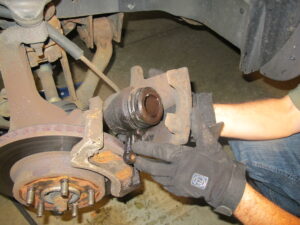 The number of light-duty vehicles seven years old or older registered in the U.S. grew by 17.3 million in the past three years, according to an analysis of available data by Experian Automotive .
The number of light-duty vehicles seven years old or older registered in the U.S. grew by 17.3 million in the past three years, according to an analysis of available data by Experian Automotive .The growth in older vehicles pushed the number of such vehicles on the road to more than 175 million, or roughly 71 percent of the 245 million light-duty vehicles registered, Experian said, and raised the average age of a vehicle in the U.S. 1.9 percent to 11 years. By contrast, the average vehicle age in Canada is 9.6 years.
In my best guess, an 11 year old car has around 130,000 miles on the odometer if you factor in the average miles driven by Americans. For brakes on the average vehicle (eyeball estimate), this is about three sets of brake pads, two sets of rotors and maybe new calipers.
If a consumer goes cheap by just replacing the pads and reusing the hardware and maybe letting a worn caliper stay on the vehicle, it could cost the customer more than doing the job right the first time. In my experience, pad swaps that do not adress uneven wear issues will only last 10,000-12,000 miles before the inside pad is worn. If the system is returned to like new condition and the pads wear evenly, the brakes could last between 25,000-32,000 miles.
Simply put, cheap brake jobs are more expensive.
Comments are closed.